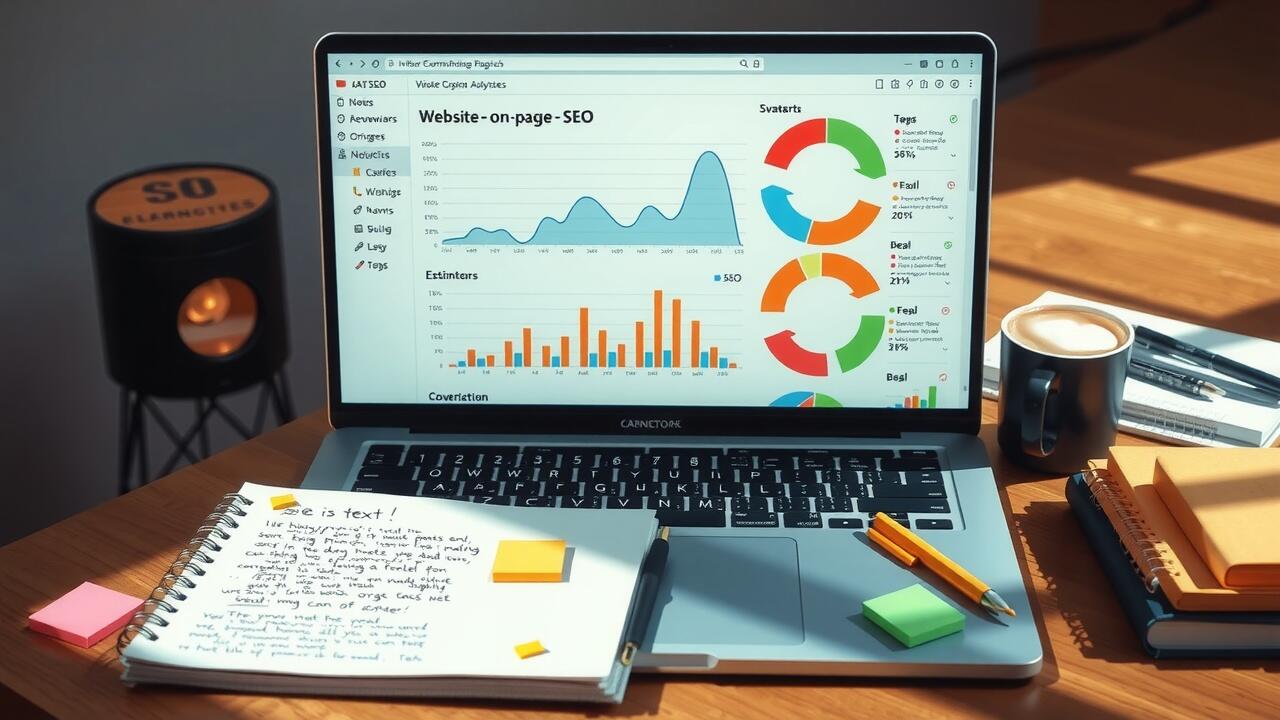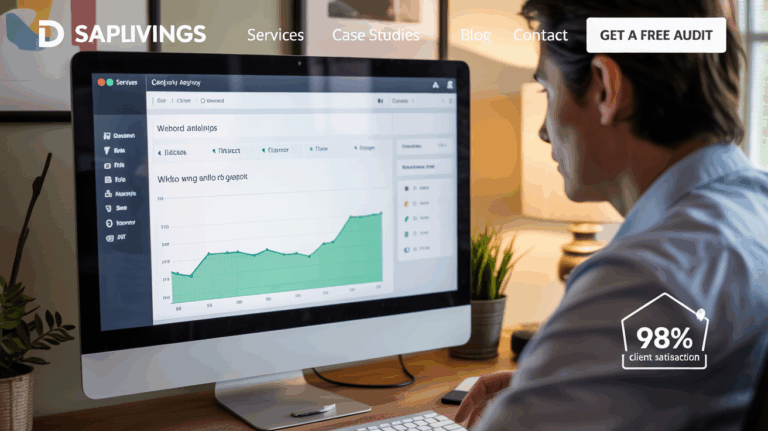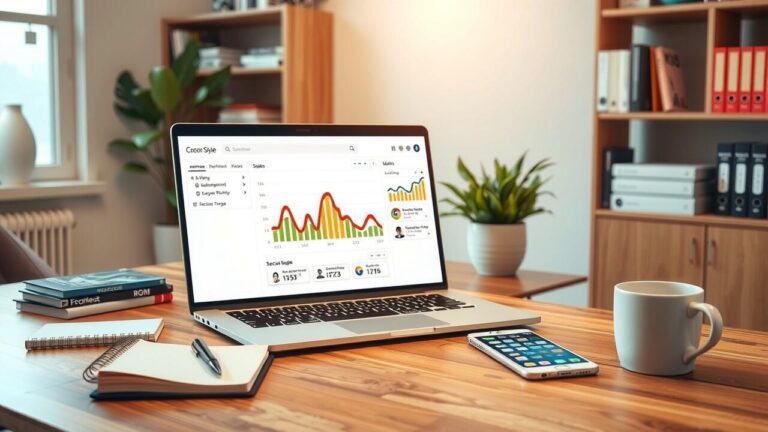On-Page SEO Checklist: Optimize Every Page Like a Pro
Optimizing Images for Better Performance
Images—oh, the unsung heroes of user engagement! They wield the power to captivate and enthrall, all while bolstering that ever-elusive search engine visibility. Yet, before you toss those images into the digital ether, a careful optimization ritual must be performed. Picture this: slashing file sizes without losing an ounce of quality—this alchemy leads to swifter page load times that keep users glued to their screens.
Enter image compressors—the trusty sidekicks in our quest for clarity and speed. When images are formatted just right, they weave together an experience so delightful that visitors won’t want to leave. But wait! There’s more than meets the eye (pun intended). File names need structure; think of them as little hints dropped for search engines eager to decipher your visual content. Descriptive filenames are like breadcrumbs leading crawlers through the forest of imagery—aiding in indexing and ranking within those crowded image searches.
And let’s not overlook alt text—it’s not merely a nod toward accessibility but a bridge for understanding between visually impaired users and your content’s essence. It provides context not only for human readers but also fortifies search engines’ grasp on what lies beneath each pixelated surface. By weaving relevant keywords into both file names and alt text, creators can amplify their presence in search results—a strategic move toward elevating organic traffic levels sky-high!
Importance of Alt Text and File Names
Alt text, a textual lifeline for images, acts as an informative bridge for users who might find themselves unable to see them. But wait—there’s more! Search engines lean heavily on this very information to decode and decipher the visual content nestled within a webpage’s digital tapestry. By weaving in rich, descriptive alt text, you’re not just enhancing accessibility; you’re turbocharging your SEO game too! This dual approach ensures that your content is both inclusive and primed for those relentless search engine crawlers. And let’s not forget about keywords—their presence in alt text can send your page rankings soaring! Suddenly, images transform from mere visual delights into pivotal players in your SEO strategy.
Now let’s pivot to file names—these little gems wield significant power when it comes to image optimization. A thoughtfully crafted file name offers up extra context and gets cozy with search engine indexing. Rather than defaulting to bland labels like “image1.jpg,” why not embrace more evocative titles that encapsulate the essence of what’s depicted? Something like “red-velvet-cake-recipe.jpg” does wonders—not only does it elevate your SEO efforts but also streamlines media organization like a charm! With such practices in place, navigating through media files becomes a walk in the park for both users and site admins alike!
| Image Description | File Name | Alt Text |
|---|---|---|
| Red Velvet Cake | red-velvet-cake-recipe.jpg | Delicious red velvet cake with cream cheese frosting |
| Sunset Over the Ocean | sunset-over-ocean.jpg | Stunning sunset illuminating the ocean waves |
| Mountain Landscape | mountain-landscape-view.jpg | Breathtaking view of mountains during sunrise |
| Business Meeting | business-meeting-collaboration.jpg | Team collaborating during a business meeting |
Enhancing Readability and User Experience
Engaging readers hinges on the art of clarity and brevity. Picture this: shorter sentences, succinct paragraphs—a recipe for heightened understanding! Enter bullet points and subheadings—those little heroes that slice through text like a hot knife through butter, making it easy to skim and snag vital details in an instant. A consistent tone? Absolutely essential! It builds bridges with your audience, knitting them closer to your brand’s essence. And let’s not forget vocabulary—the right level resonates deeply with your target demographic while keeping doors open for inclusivity.
Now, let’s pivot to another crucial element: white space—the unsung hero of design! Thoughtful spacing around text, images, and other components can transform a chaotic layout into a serene landscape where the eye can roam freely. This breathing room sharpens focus and invites readers to truly absorb what you’re sharing. And don’t underestimate the power of varied font sizes and styles; they can spotlight key ideas like beacons in the fog. Ultimately, both visual flair and textual substance must dance together in perfect harmony to craft an experience that feels effortlessly user-friendly!
Tips for Clear and Concise Content
Creating content that captivates and keeps readers hooked is a must! Start with simple language—ditch the jargon and those tangled phrases. Short, punchy sentences work wonders; they let your audience snag the main ideas in a flash. Think about using bullet points or numbered lists; they’re like signposts for complex topics, making them digestible bites.
Now, here’s another nugget of wisdom: trim the fat! Every sentence should have a mission—each word counts. This not only sharpens your message but also holds onto reader interest from start to finish. And don’t forget to harness headings and subheadings—they’re your trusty compass through the text, guiding readers on an easy-to-follow journey while boosting their understanding along the way!
Internal Linking Best Practices
Internal links are absolutely essential in crafting a seamless navigation experience on your website. They act as guiding stars, leading users to related content while simultaneously helping search engines decipher the intricate web of connections between various pages. This thoughtful arrangement not only enriches the user journey but also amplifies the likelihood that visitors will delve deeper into more information. Make it a priority to link to relevant pages within your own domain—this not only enhances user engagement but also bolsters contextual relevance across the board.
As you weave internal links into your content, think about employing descriptive anchor text that vividly articulates what awaits on the destination page. This strategy is a double whammy: it boosts SEO and elevates the user experience by setting clear expectations for what’s next. However, tread carefully; resist the temptation to over-link! Instead, hone in on just a handful of links that truly resonate with your content’s theme. Regularly auditing your internal linking structure can keep everything shipshape, ensuring effective pathways remain open for both users and search engine bots navigating through your digital landscape.
Benefits of a Strong Internal Link Structure
A meticulously crafted internal linking strategy brings a plethora of advantages, dramatically boosting a website’s overall performance. Picture this: as users navigate through the maze of relevant content, those internal links act like guiding stars, creating an intuitive journey that beckons them to explore further. This dynamic not only elevates user engagement but also slashes bounce rates—visitors are drawn deeper into the site’s universe.
But wait! There’s more! Search engines revel in a well-defined internal linking framework; it allows them to crawl and index content with remarkable efficiency. The reward? A potential uptick in visibility on search results pages that could make all the difference.
Now let’s delve into another fascinating aspect: distributing page authority across your digital domain. When high-authority pages link out to their less prominent counterparts, it’s akin to shining a spotlight on hidden gems within your site. This can turbocharge their ranking prospects for various associated keywords—an opportunity no savvy webmaster should overlook!
In essence, adopting a strategic approach to internal linking is not merely about enhancing user experience; it’s about harnessing the full power of SEO performance—a crucial element in any thorough optimization playbook.
Ensuring Mobile Responsiveness
The surge in mobile internet usage has made it absolutely vital for websites to deliver a fluid experience across an array of devices. Think about it—a design that’s friendly to mobile not only caters to varying screen dimensions but also turbocharges loading speeds. This nimbleness helps keep bounce rates at bay and invites users to linger longer, ultimately boosting engagement levels in delightful ways.
Embracing responsive design is key; it ensures that elements like text, images, and navigation shift seamlessly, showcasing content that’s easy on the eyes no matter what device you’re wielding. A finely-tuned mobile site takes into account essentials like touch-friendly buttons and just-right text sizes for optimal readability—because who wants to squint? Making sure critical info is readily accessible on smartphones can skyrocket user satisfaction.
And let’s not forget: regular testing across a tapestry of devices and screen resolutions is non-negotiable. It’s all about pinpointing and rectifying any responsiveness hiccups before they trip up the user journey. These proactive strategies lay down the groundwork for an enjoyable user experience—a crucial element for keeping visitors hooked while also playing nice with search engine algorithms!
Importance of a Mobile-Friendly Design
The surge in mobile device usage has radically reshaped the landscape of online information access. Picture this: a mobile-friendly design isn’t just a nice-to-have; it’s an absolute necessity! It guarantees that websites operate smoothly across an array of screen sizes, elevating the user experience to new heights. This flexibility is crucial for the ever-increasing wave of users who are glued to their smartphones and tablets for their browsing needs. But beware! If mobile optimization falls short, prepare for higher bounce rates—those frustrated visitors won’t hesitate to abandon a site that feels clunky or unreadable on their devices.
But wait, there’s more! Search engines have made it clear: they give significant weight to mobile responsiveness when determining rankings. Websites lagging behind in delivering a smooth mobile experience could find themselves slipping down search engine results like sand through fingers—a serious blow to visibility and traffic alike. So, what’s the remedy? Fine-tuning design elements like layout, font size, and touch targets specifically for mobile users not only boosts SEO but also skyrockets overall customer satisfaction and engagement levels. It’s about transforming challenges into opportunities—because in this fast-paced digital age, every detail counts!
- A mobile-friendly design enhances user engagement and retention.
- Improved load times on mobile devices lead to better user experience.
- Responsive design can lower bounce rates by adapting to user preferences.
- Mobile optimization can significantly improve search engine rankings.
- A streamlined mobile experience fosters brand credibility and trust.
- Ensuring accessibility on mobile can reach a wider audience demographic.
- Regular testing and updates for mobile design keep user experience fresh.
Monitoring and Analyzing Results
Effective monitoring and analysis—oh, they’re the lifeblood of any SEO strategy! Imagine wielding tools like Google Analytics and Search Console; they become your trusty compass in navigating the vast sea of digital traffic. With these powerhouses at your fingertips, website owners can delve into the intricate web of traffic sources, decipher user behavior patterns, and decode conversion rates. The treasure trove of insights unearthed from this data unveils not only the shining stars among pages and content but also those hidden corners yearning for a touch-up. A regular review? Absolutely essential! It’s like peering through a crystal ball to see how every tweak ripples across your optimization efforts.
Now let’s talk about KPIs—the key performance indicators that hold sway over wise decision-making. Metrics such as organic search traffic, bounce rates, and average session duration serve up nuggets of feedback on how users are engaging with your site. And don’t overlook keyword rankings; they’re crucial for measuring just how effective those on-page SEO tweaks really are! By keeping an eagle eye on these metrics—constantly analyzing them—website owners can sculpt their strategies with precision, amplifying what works while shoring up areas that boost visibility and enhance user experience.
Key Metrics to Track for Optimization
Keeping a close eye on key performance indicators is absolutely crucial for grasping how well your on-page SEO strategies are performing. Picture organic traffic as the spotlight metric, illuminating the flow of visitors streaming in from search engines. But wait—what about bounce rates? These figures tell you whether folks are genuinely interested in your content or if they’re just popping in and out like it’s a revolving door.
And then there are click-through rates, those little nuggets of insight that reveal how compelling your titles and meta descriptions really are, shining a light on spots begging for improvement.
But hold on; we can’t forget conversion rates! They’re the gold standard for understanding how effectively your pages motivate users to take action, be it signing up or making that purchase. Average session duration adds another layer, hinting at engagement levels with your content—are people sticking around or rushing off? Oh, and let’s talk page load speed; this factor influences not only user experience but also where you land in search rankings!
Harnessing tools like Google Analytics or SEMrush becomes essential here—it’s like having an arsenal at your fingertips to collect and dissect this data methodically. With insights gleaned from all these metrics, you can make informed tweaks aimed at supercharging your site’s performance!
Conclusion
Effective on-page SEO—oh, what a tangled web it weaves! It’s absolutely pivotal for boosting your website’s visibility and enhancing the user experience. Picture this: by meticulously fine-tuning every single element of your pages—from images that captivate to internal links that guide—you create a seamless pathway for both search engines and users alike. They’ll meander through your content with ease! Embracing best practices in readability and mobile responsiveness doesn’t just lure in more visitors; it profoundly influences the overall performance of your site.
But wait, there’s more! The real magic lies in monitoring and analyzing the fruits of your labor. This ongoing scrutiny opens up a treasure trove of insights about what resonates—and what flops. Armed with this knowledge, you can make savvy adjustments to keep things fresh and effective. A proactive stance toward on-page SEO isn’t merely beneficial; it’s essential for nurturing sustained growth and inching those rankings ever higher over time.
FAQS
What is on-page SEO and why is it important?
On-page SEO, a delightful dance of optimization at the individual web page level, aims to elevate rankings and draw in an avalanche of relevant traffic from search engines. Its significance can’t be overstated; it empowers search engines to decode your pages’ content, enriches user experiences beyond measure, and amplifies your website’s visibility across the digital landscape.
How can I optimize images for better SEO performance?
To supercharge image optimization, embark on a journey through descriptive file names that tell tales, inject alt text that’s not just relevant but also compelling, compress those images for lightning-fast loading times, and select the right formats like a seasoned artist choosing colors. These steps work wonders to boost page load speed while enhancing accessibility—a double whammy for stellar SEO!
What are the key elements of enhancing readability and user experience?
The magic lies in clarity wrapped in conciseness! Key ingredients include crafting content that’s easy to digest, formatting with headings that guide like signposts and bullet points that pop. A logical flow keeps readers engaged while language tailored to your audience ensures they feel right at home. Together, these factors create an engaging environment where bounce rates plummet!
What are the best practices for internal linking?
Ahoy! Best practices for internal linking sail smoothly through using descriptive anchor text as navigational stars—linking only to pages that resonate within your site’s ecosystem! Maintain a judicious number of links per page; too many can confuse even the most seasoned sailors. Seamlessly woven into your content like threads in fabric—this strategy distributes page authority beautifully while bolstering site navigation.
How can I ensure my website is mobile-friendly?
To guarantee mobile-friendliness worthy of applause, embrace responsive design techniques as if you were dressing up for an event! Optimize loading speeds—the quicker the better—and make every element accessible even on petite screens. Use Google’s Mobile-Friendly Test tool as your trusty compass—it will guide you toward assessing how well your site dances across devices!
What key metrics should I track for monitoring on-page SEO results?
Keep an eagle eye on vital metrics such as organic traffic numbers soaring high above clouds or bounce rates dipping low into mysterious waters! Average session duration tells stories about engagement levels; keyword rankings reveal treasure maps leading users straight to you; monitor page load speed closely along with conversion rates—these insights illuminate paths towards refining your on-page SEO strategies effectively!







